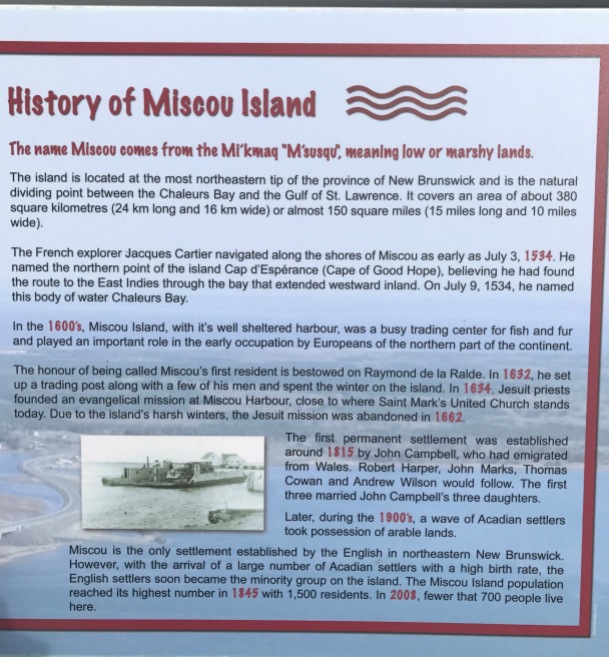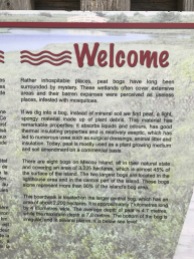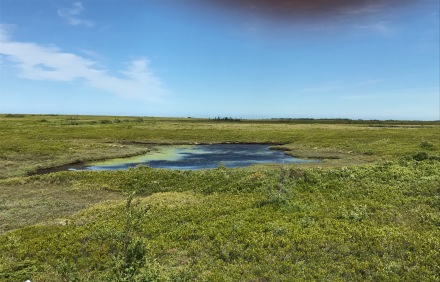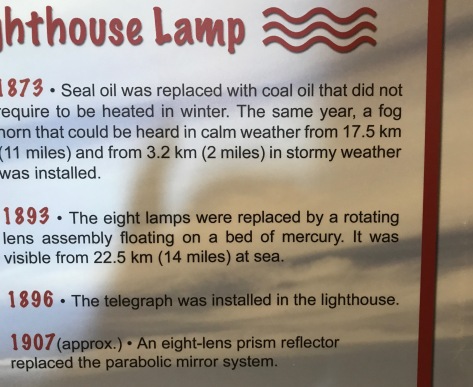“One of the single most beautiful spots in the world.” –2010 Society of American Travel Writers statement about Miscou Island when awarding the island with a Phoenix Award
“You should definitely go to Miscou Island. The lighthouse is beautiful, and the beaches are private for miles and miles.”
John, my husband, and I were sitting at the bar of Joey’s Pub and Eatery in Bathurst, New Brunswick, Canada, this past July, eating dinner and talking with waiter/bar-tender, Chris. We were nearing the last couple of days of what had been a delightful two-week stay. In the course of our conversation, Chris asked if we had ever visited Miscou Island. It was after this engaging dialogue that we decided to drive nearly two hours in order to discover this geographical treasure.
Due to its proximity to Prince Edward Island, home of Anne of the Green Gables book series author, Lucy Maud Montgomery, and Nova Scotia, a whale-watching destination, New Brunswick is often written off as a “go-through” province. In fact, our family discovered this jewel-of-a-province while driving to PEI. However, New Brunswick, as we have since discovered, is, and should be considered, a destination unto itself. In fact, Miscou Island, as we learned, is one more reason to vacation in New Brunswick.
After a delightful breakfast at 748 Restaurant, John and I, along with our daughter and friend, headed down the scenic Acadian Coastal Drive. Traversing this route, we made our through several towns and sites we had previously visited including: Grande Anse with its beautiful beaches and Pope’s Museum; the Village Historique Acadien, a historical reconstruction of more than 40 buildings that portrays Acadian life between 1770 and 1949; the quaint, French-speaking town of Caraquet, considered the capital of Acadia as it roots are deeply steeped in the Acadian families who settled there after forced deportation by the British in 1755; and Shippagan, home of the beloved New Brunswick Aquarium and Marine Center (a great place to see blue lobsters!).
Finally, we crossed a drawbridge, built in the 1950s, connecting Shippagan to Lameque Island, a New Brunswick location we had never before visited. Aboriginal people from the Micmac nation originally settled and named it. Later, French explorer, Nicolas Denys, established a trading post on the island around 1645, but soon abandoned it. A little over 100 years later, the first permanent settlers began arriving on the island. Then, after the British deportation of 1755-1763, five families from PEI make Lameque Island their home in the 1780s. In fact, two of those original communities, Lameque and Sainte-Marie-Saint-Raphael, still remain. Currently, there are approximately 6,000 residents making a living on this picturesque island working in industries such as fishing and peat moss as well as the recently established windmill industry—which we drove past on our way to Miscou Island.
We left Lameque Island and crossed over to Miscou Island via the 2,000-meter Miscou Island Bridge, which opened in 1996 and replaced a cable-ferry. Both Lameque and Miscou Islands separate the Bay of Chaleur from the Gulf of Saint Lawrence. Furthermore, Miscou, interestingly enough, is actually formed by a group of islands attached by bays.
Its name, also given by the Micmac people who used the island during hunting and fishing season, means “low wetlands.” Later, Jacques Cartier first explored it in 1534, and the island became a fishing base the same year. In fact, Miscou’s main industry still remains fishing for its nearly 600 full-time residents. However, unlike Lameque, Miscou’s numerous peat beds have not been harvested and remain in their natural state—making Miscou a must see location in the fall when its vast peat bogs become a vibrant scarlet red.
Traveling along the Route 113, the main road that runs the length of the entire island, we saw numerous historical, wildlife viewing, and scenic sites. Of first note, was the charming wharf area providing shelter to nearly 60 boats that fish for lobster, herring, crab, and scallops as well as La Terrase a Steve, an open-air eatery that claims to serve lobster 14 ways. As we drove past the eatery overlooking the harbor, we couldn’t help but notice its open-air picnic tables were filled with diners enjoying this local favorite.
Continuing along our route, we drove past charming old churches, including the site of New Brunswick’s first established church. Additionally, we saw the site where a Russian plane made an emergency crash landing in 1939 in an attempt to fly nonstop from Moscow to New York. Continuing our winding drive through the exquisite bayside, we drove past access roads to “official” public beach areas that offer restrooms and changing facilities, and instead opted to stop at two different boardwalks: Lake Fry Observatory, known for bird-watching (over 265 bird species have been recorded on Miscou); and, Peatland Path, a spectacular stretch of boardwalk built over colorful, unspoiled, and natural peat land. In fact, it was on Peatland Path that we saw an actual a carnivorous plant, the pitcher plant, up close!
Finally we arrived at Miscou Lighthouse, a National Historic Sight of Canada. It was built in 1856 and is located at the most northern point of the island. This octagonal wooden structure, built with hand-sawn timbers, originally measured 74 feet from its base to top, but was extended to 80 feet in 1903. It is housed with a red Fresnel lens at the top.

As we entered the lighthouse, workers warmly greeted us. We paid our entry fee and began climbing the numerous steps, stopping at each level to take in the views as well as peruse the photos and educational exhibits. Eventually, we reached the top and were rewarded with panoramic views of the seemingly endless miles of expansive coastal beach beckoning us to explore. We heeded the call.
Leaving the lighthouse, we strolled along the nearby empty stretch of beach. It was littered with beautiful rocks, shells, driftwood, and our favorite, colorful sea glass. The day could not have been more clear and beautiful, with vividly cobalt blue skies dotted with pure white cotton fluff clouds above, and sparkly blue-green gulf waters beside us. Though the wind was bracing, the memories we created along the shores of Miscou Island on that July day, and for that matter during those two wonderful weeks in coastal New Brunswick, will forever warm my heart.
I highly encourage a visit, not only to Miscou Island, but also to New Brunswick and the inviting Acadian Coastal drive. It is rich with a unique history, steeped in faith, full of vibrant and gracious people, and possesses an unspoiled, picturesque, rocky shoreline with plenty of space for all of your favorite beach/water activities.











































